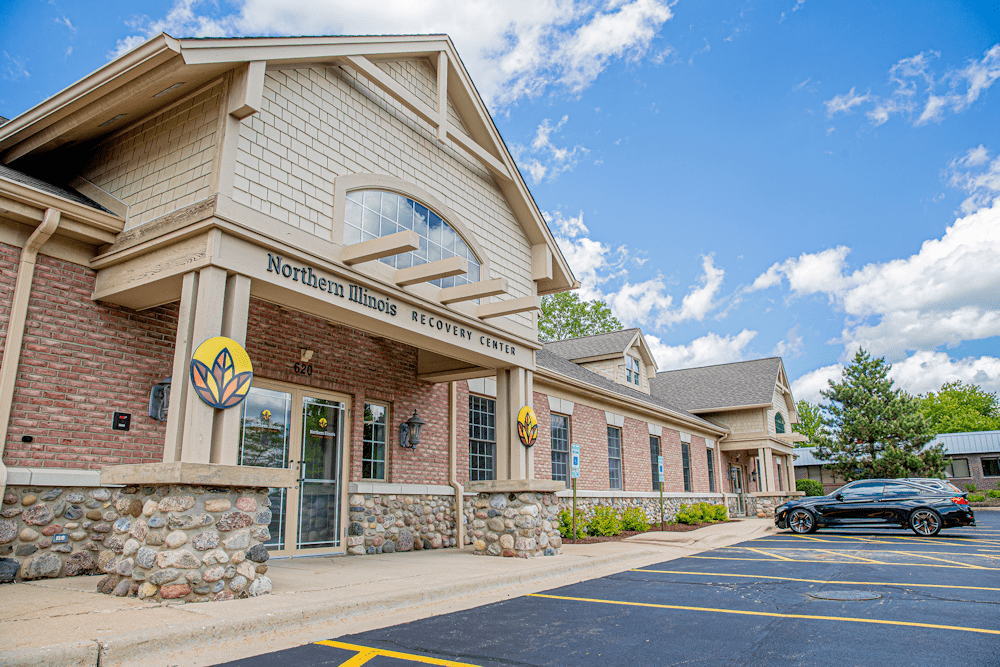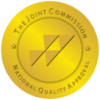Fentanyl Addiction Treatment
Similar to most chronic diseases, addiction is a treatable condition. Although no sole treatment is right for everyone, it is possible to recover. There is help available for opioid addiction, such as an addiction to fentanyl. Fentanyl addiction is a chronic and relapsing condition that can overtake anyone. The fact is, there are millions of Americans struggling with opioid use disorder (OUD) every single day.
OUD treatment can:
- Take place in a variety of settings
- Vary according to the person’s needs
- Make use of several different approaches
- Continue for varying amounts of time
If you have any questions about our addiction treatment programs in Illinois, please reach out today!
Jump to Section
The Fentanyl Crisis
In March of 2022, twelve-month overdose deaths reached their highest recorded level in the U.S., with an approximate 110,360 deaths. During the pandemic, changes in the illicit drug supply resulted in more fentanyl-related overdose deaths. The strength of fentanyl and the quickness of onset of its effect have the potential to increase overdose deaths, particularly among individuals who aren’t able to get medical care in time.
Research found that overdose deaths increased early during the pandemic period and were steered mostly by out-of-hospital deaths that were linked to fentanyl. These deaths increased from 46.6 per million in 2016 to 178 per million in 2021. This amounts to a 282% increase.
What is Fentanyl?
Fentanyl is a strong synthetic opioid. It’s similar to morphine, but it’s 50 to 100 times more potent. The two types of fentanyl are pharmaceutical fentanyl and illicitly manufactured fentanyl (IMF).
Pharmaceutical fentanyl is typically used to treat patients who are suffering severe pain, especially after surgery or for advanced-stage cancer treatment. At other times, it’s used to treat people with acute chronic pain and have become physically tolerant to other opioids.
Why is Fentanyl So Dangerous?
As a part of the class of drugs known as opioids, which are used for pain relief, fentanyl can also be addictive. The main way that fentanyl is different from the more familiar opioids like morphine, codeine, or heroin is its potency. Potency indicates only the amount of a substance necessary to produce a particular effect.
As mentioned, fentanyl is 100 times more potent than morphine. This means that if 10 mg of morphine is needed for pain relief, then only one-tenth of 1 mg of fentanyl is needed to provide the same effect. Few people have access to a scale sensitive enough to measure amounts that small accurately.
Small miscalculations in dosage can result in a fatal overdose. This is why fentanyl is so dangerous. Aside from its potency, fentanyl is not necessarily more dangerous than other opioids. It’s used safely all the time as part of routine medical care. However, it’s administered by trained professionals who can accurately measure the correct amount.
Deadly Blends
Frequently, illicit drug dealers mix fentanyl with other drugs, including:
- Heroin
- Methamphetamine
- MDMA
- Cocaine
This is done because it only takes a minuscule amount of fentanyl to deliver the high. In turn, this makes the original drug cheaper to manufacture and the profits greater. It’s a risky proposition when people use drugs when they don’t know that they may be blended with fentanyl. They might be using much stronger opioids than their body can handle, increasing the likelihood of
How Does Fentanyl Affect Your Brain?
The same as other opioid drugs like heroin and morphine, fentanyl affects your brain by binding to the body’s opioid receptors. These are found in the areas of the brain that control pain and emotions. If you use opioids repeatedly, your brain adjusts to the drug. This, then, lowers its sensitivity to the chemical. This is called tolerance. This occurrence is what makes it hard to feel pleasure from anything but the drug.
People can become dependent on fentanyl very quickly. It will be needed to avoid feeling the uncomfortable withdrawal symptoms, which serve to drive the cycle of addiction: the more you use, the more you need to hold off the withdrawal symptoms to feel normal, and on and on it goes. However, a person can have a dependence on fentanyl but not be addicted. However, dependence often leads to fentanyl addiction.
Side Effects
Although fentanyl’s effects might feel good at first, other effects can be very unpleasant. Fentanyl’s effects include:
- Euphoria (extreme happiness)
- Fatigue or sleepiness
- Feeling sedated
- Nausea
- Constipation
- Confusion
- Difficulty breathing
- Loss of consciousness
- Throat tightening
- Heavy sweating
- Lower heart rate
- Muscle stiffness
- Weakness
- Dry mouth
- Constricted pupils
Serious Side Effects
- Excessive sleepiness
- Problems keeping balanced or walking
- Seizures
- Twitching or jerking muscles
- Hallucinations
- Changes in heartbeat–slowing down or speeding up
- Overdose
Signs of Fentanyl Addiction
Due to its potency, fentanyl is a highly addictive drug. Medical professionals and addiction specialists diagnose fentanyl addiction as an opioid use disorder (OUD). This means the individual uses fentanyl compulsively despite the harmful results. Only a medical professional can formally diagnose OUD, but it’s useful to know the common signs of addiction. The DSM-5 (diagnostic manual used by psychiatric and medical professionals) outlines the criteria as:
- Using the drug in larger amounts or for a longer time than was originally intended.
- Not being able to stop or cut down on your use even when you want to.
- A lot of time is spent getting, using, and recovering from the effects of fentanyl.
- You experience cravings, or intense physical or psychological urges to use.
- Inability to handle responsibilities at home, work, or school because of fentanyl use.
- Continuing to use fentanyl even though it’s causing interpersonal or social problems..
- Giving up important activities or hobbies to use it.
- You use it in situations and environments where it is physically dangerous to do so.
- You keep using even while being aware that it is causing a physical or psychological problem.
- You have developed tolerance–needing to use more of the drug to experience the same effects.
- You have withdrawal symptoms when you stop or cut down.
What Are Some Fentanyl Withdrawal Symptoms?
Some of the common withdrawal symptoms include:
- Diarrhea
- Anxiety
- Nausea and vomiting
- Muscle and bone pain
- Sleeping problems
- Cold flashes and goosebumps
- Flushing of the skin
- Extreme cravings
- Muscle stiffness
- Unmanageable leg movements
- Weakness
- Dry mouth
- Slowed heart rate
Signs of Fentanyl Overdose
If you can recognize the signs of an opioid overdose, you might be able to save a life. Signs to look for include:
- “Pinpoint” pupils (constricted)
- Falling asleep or loss of consciousness
- Slow, shallow, or no breathing
- Choking or gurgling sounds
- Body limpness
- Cold or clammy skin
- Skin discoloration, mostly on lips and nails
Fentanyl Addiction Treatment at Northern Illinois Recovery Center


Similar to other opioid addictions, medication and behavioral therapies have proven to be effective in treating fentanyl addictions.
At our drug and alcohol detox center, we do everything we can to help our clients have a safe and comfortable detox. Withdrawal from fentanyl brings with it some severe symptoms. They are so unpleasant that many people who try to quit on their own give up before they’re able to do it. The first step in treatment for fentanyl addiction, or any OUD, is usually a medically supervised detox where the drug is eliminated from the system over time. With 24-hour medical monitoring, the most severe symptoms can be treated for a safe and successful detox to break the physical dependence on fentanyl.
Medication Assisted Treatment
MAT treatment utilizes medications for SUD, including fentanyl, which are effective, safe, and save lives. These medications interact with the same opioid receptors in the brain as fentanyl. However, they don’t produce the same effects:
Methadone: Methadone is called an opioid receptor full agonist because it binds to and activates opioid receptors, which eases withdrawal symptoms and cravings.
Buprenorphine: This is an opioid receptor partial agonist that binds to and partially activates the opioid receptors to also ease withdrawal symptoms and cravings.
Naltrexone: Naltrexone is an opioid receptor antagonist. It prevents fentanyl from binding to the opioid receptors, which blocks its effects.
The main purpose of detox is to prepare you to treat the psychological features of addiction. The highest level of care is our inpatient drug rehab in Illinois. In residential treatment, you live in a secure, drug-free environment, and you will be safe from any distractions and situations that may trigger a relapse. There is 24-hour medical supervision in case of any emergencies.
It’s very common for a person with a substance use disorder to also have a mental disorder. When this happens, it’s called a dual diagnosis, and the two disorders must be treated at the same time. Failure to treat them both will only make both of them worse. At NIRC, we have an extreme dual diagnosis treatment program in Illinois. Reach out to us today if you would like to learn more about it.
PHPs are technically an outpatient program because you don’t live at the treatment facility, so it is considered a lower level of care. However, you do receive the same intensive treatment as in a residential program. Every day, you spend at the treatment facility and go home in the evening.
There are two other types of outpatient programs. Each one is a step down in levels in that they require fewer hours of treatment. They include an intensive outpatient program (IOP) and a general outpatient program (OP).
Behavioral therapies and medications are evidence-based methods of treating OUD. By integrating medicine and therapy, the chance for success is greatly improved.
Medication
Medications support recovery by normalizing your brain chemistry, easing the cravings, and suppressing the symptoms of withdrawal.
Behavioral Therapy
Behavioral therapy works on the belief that addiction is a learned behavior. Therefore, it can be “unlearned.” Behavioral therapies have been shown to be effective for addiction treatment with faster results than traditional talk therapies.
Psychotherapy
Individual, family, and group therapies are also effective in addressing personal issues that have an effect and may be driving an individual’s addiction.
Sober Living Residence
After completing a formal treatment program, many people still don’t feel confident in their sobriety, or don’t have a stable or supportive home environment to return to. In that case, a sober living environment (SLE) allows a person to work on their recovery with other people in the same position. SLEs are a great source of support and encouragement.
Northern Illinois Recovery Center Provides Comprehensive Treatment for Addiction


If you’re thinking about treatment for yourself or someone you care about, Northern Illinois Recovery Center offers a complete range of programs that can be designed to address your individual needs. From residential care to sober living, our staff is experienced and cares about your success.
Our licensed professional therapists are specifically trained addiction specialists and experienced in psychotherapy as well as various behavioral therapies. You can continue your treatment by stepping up or down the treatment levels as needed. If going home is not appropriate while you continue treatment, sober living can help ensure that you have the best chance at a lifelong recovery.
We are aware that one size does not fit all. That’s why Northern Illinois also offers specialized programs for men, women, seniors, young adults, and individuals with dual diagnoses.
Northern Illinois Recovery Center is located in Crystal Lake, IL, near pristine lakes, boating, and hiking. Keep in mind that many people find recovery easier if they are far from home. Whether you live in the area or not, you owe it to yourself to get some answers. Contact us today.
Get the help you need at Northern Illinois Recovery!
855.458.1739
Northern Illinois Recovery Resources


Licensed Physician and Surgeon
Dr. Beth Dunlap, a board-certified addiction medicine and family medicine physician, and is the medical director at Northern Illinois Recovery Center. She is responsible for overseeing all the integrated medical services at both campuses. Beth completed medical school, residency, and fellowship at Northwestern University, where she continues to serve on the faculty as a member of the Department of Family and Community Medicine. She has extensive experience in addiction medicine at all levels of care, and her clinical interests include integrated primary care and addiction medicine, harm reduction, and medication-assisted treatment.



